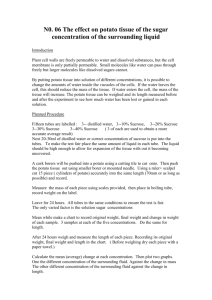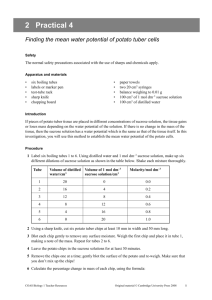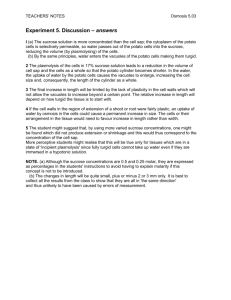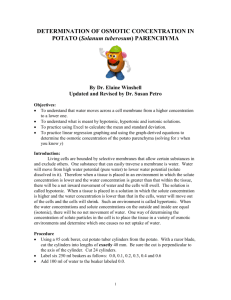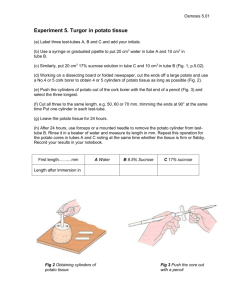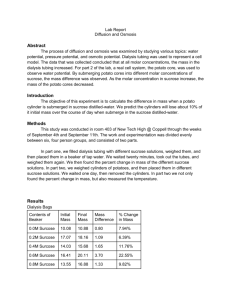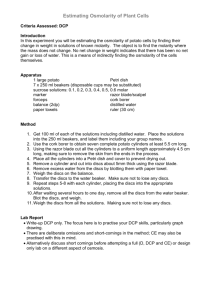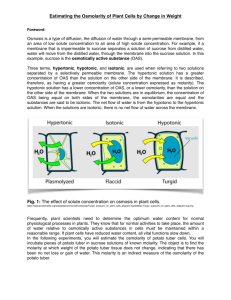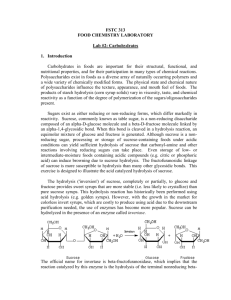Water Potential Lab: Potato Tissue Experiment
advertisement
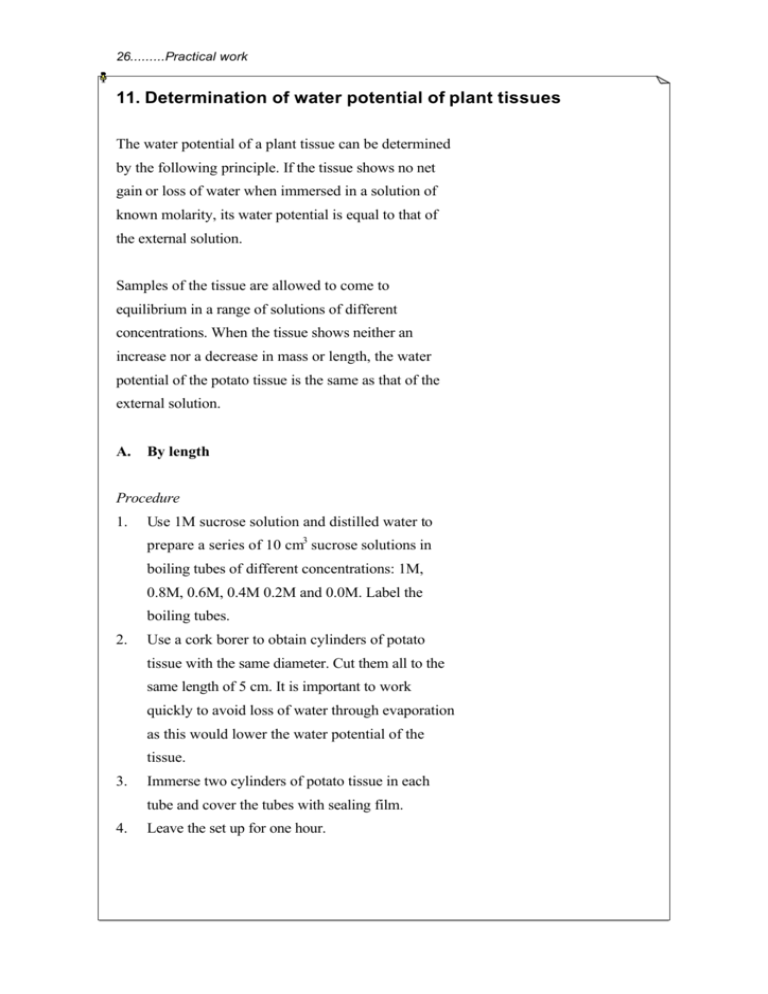
26.........Practical work 11. Determination of water potential of plant tissues The water potential of a plant tissue can be determined by the following principle. If the tissue shows no net gain or loss of water when immersed in a solution of known molarity, its water potential is equal to that of the external solution. Samples of the tissue are allowed to come to equilibrium in a range of solutions of different concentrations. When the tissue shows neither an increase nor a decrease in mass or length, the water potential of the potato tissue is the same as that of the external solution. A. By length Procedure 1. Use 1M sucrose solution and distilled water to prepare a series of 10 cm3 sucrose solutions in boiling tubes of different concentrations: 1M, 0.8M, 0.6M, 0.4M 0.2M and 0.0M. Label the boiling tubes. 2. Use a cork borer to obtain cylinders of potato tissue with the same diameter. Cut them all to the same length of 5 cm. It is important to work quickly to avoid loss of water through evaporation as this would lower the water potential of the tissue. 3. Immerse two cylinders of potato tissue in each tube and cover the tubes with sealing film. 4. Leave the set up for one hour. Practical work.........27 5. Remove the cylinders from each tube. Measure the length of the cylinders, and calculate the percentage change in length using the formula below: % change in length 6. = final length – initial length initial length Find the mean percentage change in length of the cylinders at each concentration. 7. Plot a graph of the mean percentage change in length (vertical axis) against the concentration of sucrose solution (horizontal axis). 8. From the graph, determine the concentration of sucrose solution which causes no change in length of the tissue. 9. The water potential of the potato tissue can be expressed in terms of the molarity of sucrose solution that causes no change in length of the tissue. B. By weight Procedure 1. Repeat steps (1) and (2) in method A. 2. Slice up each cylinder into six discs of approximately equal thickness. Place each group of discs on a separate piece of filter paper to blot dry the water on the surfaces. 3. Weigh each group of discs and record the results. 4. Put the groups of discs in each of the labelled tubes. Cover the tubes with sealing film. 5. Leave the set up for one hour. x 100% 28.........Practical work 6. Remove the discs from each tube. Blot off any surplus fluid quickly and gently with filter paper and re-weigh them. Record the new weight of each group of discs. 7. Calculate the percentage change in weight using the formula below: % change in weight 8. = final weight – initial weight initial weight Plot a graph of the percentage change in weight (vertical axis) against the concentration of sucrose solution (horizontal axis). 9. From the graph determine the concentration of sucrose solution which causes no change in weight of the tissue. 10. The water potential of the potato tissue can be expressed in terms of the molarity of the sucrose solution that causes no change in weight of the tissue. x 100%
